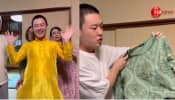Sydney: Diamond is best known for being a prized gem and the hardest cutting element available. Now, thanks to research, it is also proving to be a super efficient laser material.
Richard Mildren, associate professor, and his colleagues at the Macquarie University Photonics Research Centre discovered in late 2008 that it was possible to generate a coherent laser beam from synthetic diamond.
They have now demonstrated diamond lasers with efficiency higher than almost all other materials.
"The major achievement is that we are able to use synthetic diamond to create high performing laser devices," Mildren said.
"We are now in a good position to explore the highly exotic laser properties of diamond, many of which are not so widely appreciated.
"For example, the speed at which heat travels through diamond is the highest of all known materials and it is hoped that this property will enable us to simultaneously miniaturise the device and increase the laser beam power to unprecedented levels."
The diamonds used in the laser research are colourless, approximately eight mm long, and weigh a bit less than a carat.
They are grown to the researcher`s specifications using a process called chemical vapour deposition that essentially creates the crystal lattice carbon by carbon atom layer by layer on top of a large flat diamond crystal substrate.
The synthetic diamond forms the core component of what is called a Raman laser, a type of laser that is optically stimulated rather than electrically powered.
"Though there has been little take up of this type of diamond in the gem market, it is very well suited to our purposes. Diamonds larger than one centimetre are likely to be available very soon which will also be an advantage for our studies."
Diamond is also the most transparent material known, in terms of the range of light wavelengths (or colours) that can pass through the material, said a Macquarie University release.
Mildren said satellite borne diamond lasers for mapping greenhouse gases in the atmosphere were also a possibility. He said it is only now - in the 50th year since the invention of the first laser - that the full potential of diamond lasers is starting to be understood.
IANS















